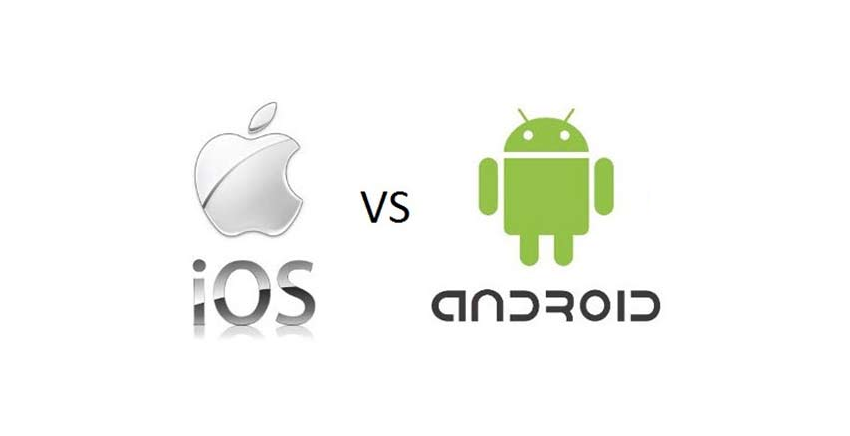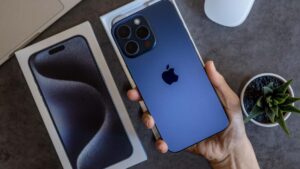The Ultimate Guide on How to choose between IOS and Android Today 2024

In the world of smartphones, two giants have emerged, each with a loyal following and distinct characteristic – iOS and Android.
These operating systems power the majority of smartphones globally, and their differences have sparked countless debates among tech enthusiasts.
In this blog post, we’ll delve into the fundamental differences between iOS and Android, shedding light on their user experiences, app ecosystems, customization options, and more.
User Experience
One of the most noticeable differences between iOS and Android lies in their user experiences. Apple’s iOS is renowned for its sleek, minimalist design that focuses on simplicity and ease of use. The interface is consistent across all iOS devices, ensuring a familiar feel regardless of the device’s size or generation. This uniformity makes it easier for users to adapt and navigate their devices effortlessly.
On the other hand, Android offers a more diverse user experience due to its open nature. Android devices are manufactured by various companies, each with the freedom to modify the interface to suit their preferences. This results in a wide range of designs and customizations, allowing users to choose a device that aligns with their aesthetic and functional preferences.
App Ecosystem
Another significant contrast between iOS and Android lies within their app ecosystems. Apple’s App Store is renowned for its strict review process, ensuring that apps are secure and of high quality before they reach users’ hands. While this may lead to a more controlled environment, it can also limit innovation, as developers must adhere to Apple’s guidelines.
In contrast, the Google Play Store, Android’s counterpart, offers a more open ecosystem, allowing developers greater flexibility in creating and distributing apps. This freedom, however, can lead to occasional instances of security vulnerabilities and low-quality applications. It’s worth noting that Google has been working diligently to enhance security measures within the Play Store.
Customization Options
Customization is an area where Android shines. Android devices enable users to personalize their experiences extensively, from changing the home screen layout to installing third-party launchers and widgets. This level of customization empowers users to craft a unique interface that caters to their preferences.
iOS, while elegant and streamlined, offers limited customization options. Users can rearrange app icons and choose from a selection of wallpapers, but Apple maintains stricter control over the design elements. This trade-off ensures a cohesive and visually pleasing interface but sacrifices the level of personalization that Android users enjoy.
Hardware Diversity
Android boasts an impressive array of hardware options from various manufacturers. This diversity allows users to select devices that align with their budget, design preferences, and feature requirements. Whether you’re seeking a budget-friendly smartphone or a flagship device with cutting-edge specifications, Android offers a plethora of choices.
In contrast, Apple’s iOS is exclusively tied to the company’s hardware offerings, limiting the range of devices available. While this results in a more controlled ecosystem, it also means that users have fewer options when it comes to device selection.
Updates and Fragmentation
iOS and Android differ significantly in terms of software updates and fragmentation. Apple’s iOS updates are typically rolled out across all supported devices simultaneously, ensuring that users receive the latest features and security patches promptly. This consistency simplifies the user experience and reduces the risk of fragmentation.
Android, due to its open nature and the involvement of various manufacturers, faces a greater challenge with fragmentation. Updates can be delayed or customized by manufacturers, leading to a diverse landscape of devices running different versions of the operating system. This can result in a disparity in terms of features and security across the Android user base.
Integration and Ecosystem
Apple is known for its ecosystem integration, allowing seamless communication and data sharing between iOS devices and other Apple products such as MacBooks, iPads, and Apple Watches. This integration fosters a cohesive user experience for those deeply invested in the Apple ecosystem.
Android, while offering integration with Google services and apps, doesn’t achieve the same level of seamlessness as iOS. However, Google’s suite of services, including Gmail, Google Drive, and Google Photos, offers a similar level of integration for Android users who rely on these services.
Final Conclusion
In the great debate between iOS and Android, both operating systems have their strengths and weaknesses.
iOS offers a consistent user experience, strict app quality control, and deep ecosystem integration. Android, on the other hand, provides extensive customization options, a diverse range of hardware choices, and a more open app ecosystem.
The choice between the two ultimately boils down to personal preferences and priorities. If you value a controlled and streamlined experience, iOS might be your preference. If customization, hardware diversity, and a more open ecosystem are your priorities, then Android could be the better fit.
Regardless of your choice, both iOS and Android have revolutionized the smartphone landscape, pushing each other to innovate and improve, ultimately benefiting millions of users worldwide.
So, whether you’re an iOS aficionado or an Android enthusiast, the competition between these two giants continues to drive technological advancements and shape the future of mobile computing.






